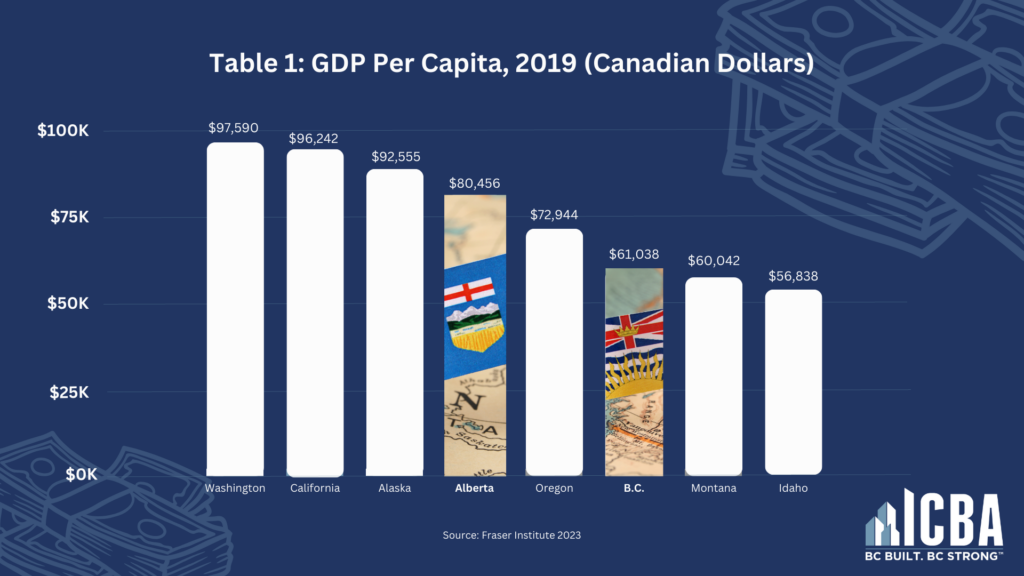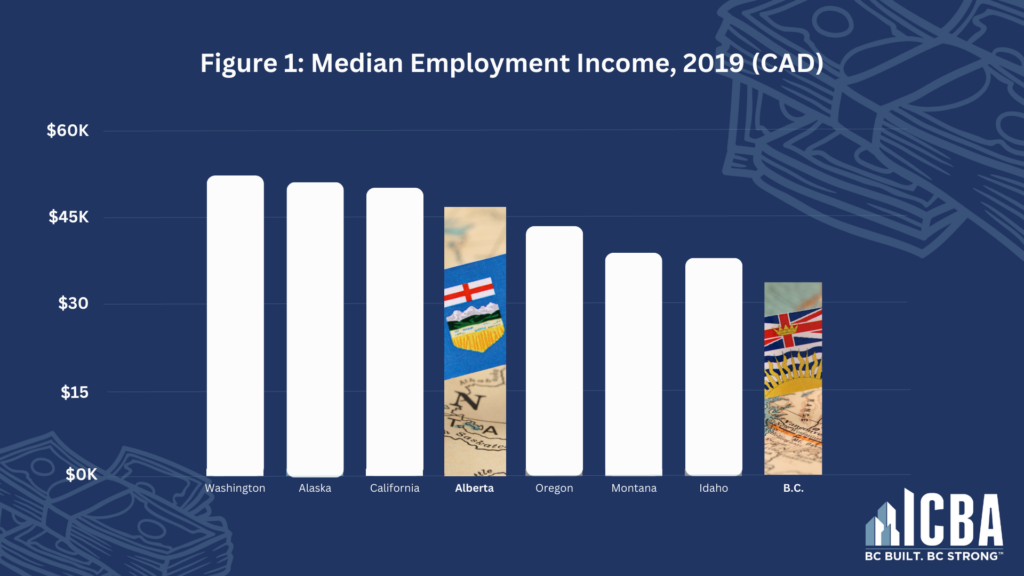The following was written by ICBA Chief Economist Jock Finlayson:
British Columbia is a relatively affluent place, enjoying a high standard of living by global standards – but cracks in the foundations of our economic success are increasingly evident.
On a per person basis, the value of inflation-adjusted economic output (real gross domestic product, or GDP) has been stagnant or declining since 2017 – a trend that’s expected to persist through at least 2025, according to estimates from the B.C. Ministry of Finance. Moreover, B.C. lags many peer jurisdictions in both the level of per capita income and overall employment earnings. This suggests the province is on the wrong track – assuming the principal goal of B.C. policy makers is to improve the well-being of the population, including workers.
Two Fraser Institute reports published in 2023 (HERE and HERE) examine economic well-being in several North American jurisdictions on the eve of the COVID-19 pandemic. These studies offer a glimpse into the troubling trends in incomes and living standards in B.C. in a comparative context.
First, looking at economic output (GDP) per person, B.C. is a very mediocre performer judged against neighbouring provinces and states – Alberta, plus six Pacific Northwest and west coast American states. GDP person is widely recognized as the best measure of prosperity; among other things, it is positively correlated with real incomes for workers and households, with the availability of consumer goods and services, and – ultimately – with the quality and quantity of public services.
Among eight Pacific Northwest/west coast jurisdictions, B.C. ranked 6th in GDP per person in 2019, the last year before the onset of the pandemic (see Table 1). Note that the figures in the table are in Canadian dollars and are based on converting U.S. to Canadian dollars using purchasing power parity exchange rates, which adjust for variations in the price of a standard basket of goods and services. Washington, California and Alaska are all far ahead of B.C. in per capita GDP – meaning they have much higher average incomes. Within Canada, Alberta is the most prosperous province – almost $20,000 Canadian ahead of B.C.
Second, it is also instructive to consider the wages/salaries received by the “median” worker – defined as the worker at the exact mid-point of the earnings distribution. On this measure, B.C. is in worse shape. In 2019, we had the lowest median employment incomes among the eight provinces/states (Figure 1). Once again, Washington, California and Alaska lead the pack, while Alberta boasts a significantly higher median employment income than B.C.
Finally, we take a stab at updating the picture for real GDP per person to 2022, using RBC Economics for the relevant Canadian data and the U.S. Commerce Department and the U.S. Bureau of the Census, respectively, for data on state-level real GDP and population size. The rankings broadly align with those for 2019 summarized in Table 1.
Once again, Washington, California and Alaska occupy the top three spots and remain far ahead of the other jurisdictions. Alberta’s real per capita GDP is still some $20,000 higher than B.C.’s. The only material change is that the initial estimates for 2022 put British Columbia at the bottom among the eight jurisdictions in per capita GDP, which represents a drop in the province’s position compared to 2019.


